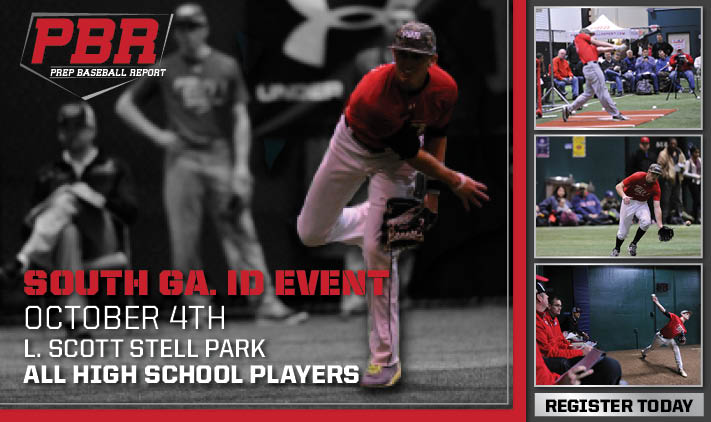Behind The Radar: Catchers
August 27, 2014
By: PBR Florida Staff
This week's installment of "Behind the Radar" deals with catchers. Evaluating the position this week is an area scout for a major league organization.
PBR: What is the first thing you look at when evaluating a catcher?
Scout: The first thing I look at when evaluating a catcher is receiving ability and arm strength.
PBR: What do you weigh higher; Pop Times or Blocking/Receiving?
Scout: It is hard to say we weigh one higher than the other. Both pop times and blocking/receiving carry equal weight into the overall defensive ability of the catcher.
PBR: The Catching position has changed over the last few years. More and more catchers are producing offensively for their respected clubs. With that being said, how do you add or subtract from a catcher’s grade based on his ability at the plate?
Scout: A catcher’s hit tool can be a separator for the prospect. If there is a catcher that has above average defensive & offensive ability then you have a special player. However, more often you find a catching prospect where his defensive or offensive ability is superior to the other.
PBR: Do you have ideal measurements or a minimum standard when grading Catchers?
Scout: By standard, catching is a defense first position. The catcher must have some defensive ability (arm strength, receiving). If the catcher is an offense first player, he must at least be adequate behind the plate in order to maintain the catching position.
PBR: How often does it happen that you go to scout a position player such as a shortstop, and project that he can be moved to behind the plate? Please explain why a major league club may look at this option.
Scout: It certainly happens. Infielders typically have good hands. If there is an infielder with good hands, a good arm, but maybe has limited range, then catching may be a good option.
PBR: What would you like to see more of from Catchers that would help you get a better evaluation on a player? What is something you have noticed that hurts a players grade?
Scout: A large part of maintaining the catcher position is the mental side of the game. One of the toughest parts of a scout’s job is determining if a high school catcher has the mental capacity to handle the position and all of its nuances. It would be nice to see more catchers calling pitches. Most importantly, it helps the catcher learn and understand the game, but it would also help scouts better evaluate the player.
Related Articles
- FL Behind the Radar: Shortstops5.15.14
What Scouts Look for In Shortstops... >> - PBRPlus 2014 Draft Blog5.30.14
Compiling draft news in one location... >> - FL 2015 Player Spotlight: Kyle Arjona - Cape Coral HS5.29.14
- PBRPlus The Hotlist: Spring Risers In 2014 Draft Class5.28.14
Highlighting prospects that boosted their stock this spring... >> - FL Bay Area Coaching Shake Up5.28.14
Jesuit Coach Richie Warren Steps Down to Take Berkeley Prep Position... >>

